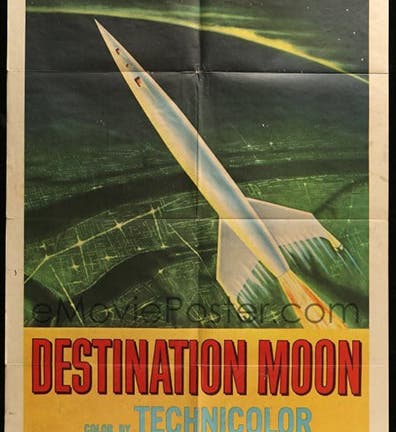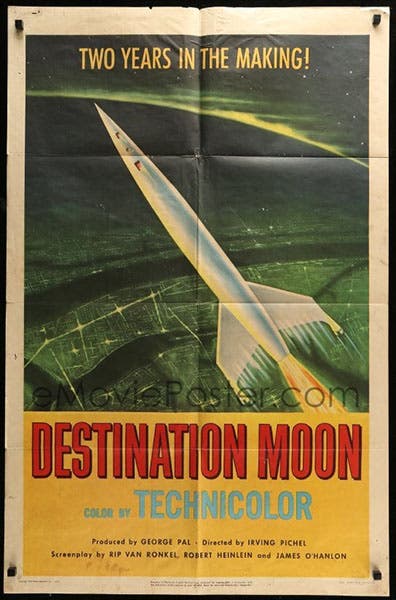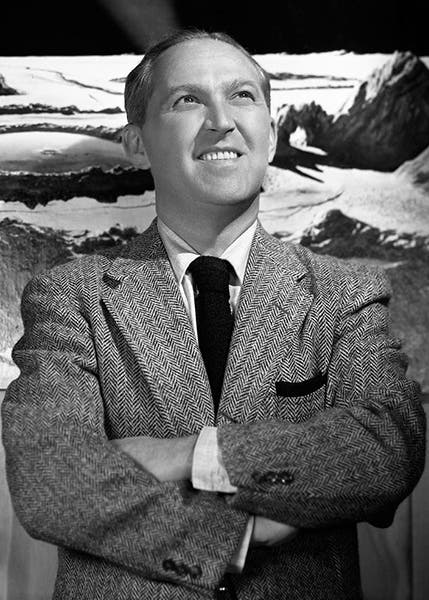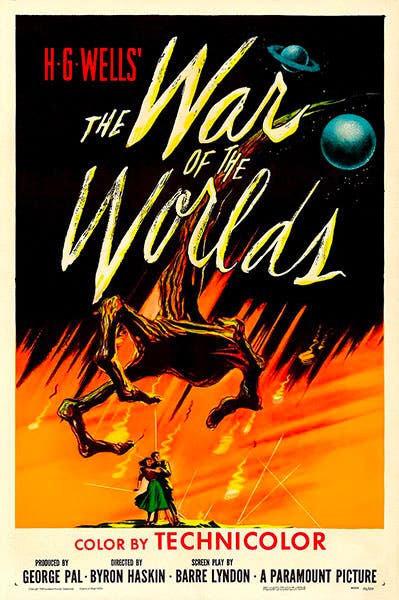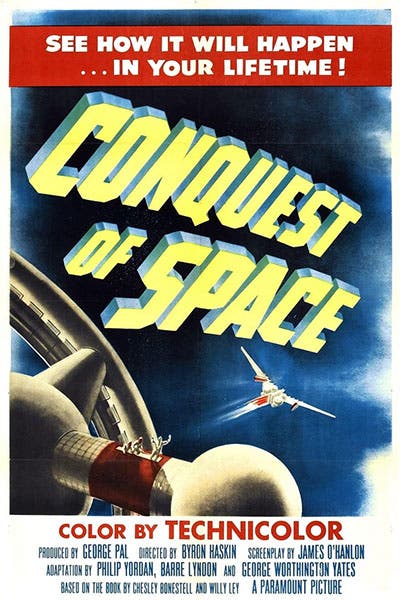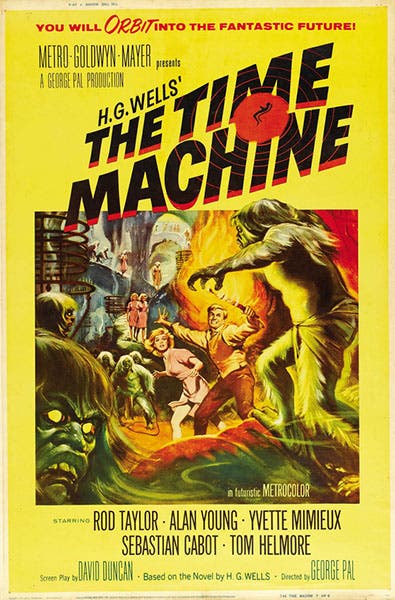Scientist of the Day - George Pal
George Pal, a Hungarian/American film animator, producer, and occasional director, was born Feb. 1, 1908. He studied film-making at the Hungarian University of Fine Arts in Budapest, developed some clever animation techniques that he used for a variety of films in Germany, and then, in 1940, he emigrated to the United States, seemingly following the lead of many Hungarian scientists who came to the U.S. in the rise-of-Hitler era, such as Leo Szliard, Edward Teller, and John von Neumann. In 1950, Pal produced his first science-fiction film, thereby inaugurating what is sometimes called the Golden Age of Science Fiction Movies. That film was Destination Moon, in which a group of American businessmen finance, and participate in, a journey by rocket to the Moon. Pal had the wisdom or good fortune to acquire the services of space artist Chesley Bonestell, who served as technical advisor for the film, and who also contributed a number of matte background paintings of such scenes as the barren lunar surface (third image), which gave Destination Moon a look that no other space film had ever achieved. The rocket is also beautifully designed, the XKE of spacecraft, and I suspect Bonestell had a hand in this as well.
Destination Moon was surprisingly successful at the box office, and Pal immediately followed it up with When Worlds Collide (1951; fourth image). This was a space disaster film, directed by Rudolph Maté, about the imminent collision of a rogue star named Bellus with Earth, and the attempt, again by private industry, since the government was slow to react to the impending menace, to build an ark to ferry a few chosen humans to the star's planet, Zyra. I was not moved by the story line, but then, I do not generally like disaster movies, but I must say the production design was wonderful for 1951, and again, much of the credit goes to Bonestell, who served as technical advisor for this film as well. The scene where the rocket launches from its roller-coaster-inspired ramp is especially nice.
War of the Worlds was Pal's third sci-fi film, coming to the screen in 1953. As I am sure most of you know, it was based on a novel of the same name by H.G. Wells, although, except for the invasion of the Martian war machines, the plot is considerably different (Pal did not have the deep distrust of organized religion that Wells did). The death rays, floating on their invisible laser legs, are more convincing that the tripods of Wells (or the machines in the 2005 film version). Bonestell again provided some technical advice. The film has excellent matte paintings, but I do not believe Bonestell was involved in painting those. The film was a great success, and holds up well even today, as one of the golden films of the Golden Age. It was shot in three-strip Technicolor, and over the years, this was replaced by cheaper methods of film printing, which caused a serious deterioration in the production values and the special effects. Criterion has recently restored the film from the original Technicolor version; I have not yet seen the restoration, but I understand it is a remarkable improvement.
Pal's fourth sci-fi film was Conquest of Space (1955; sixth image), and it was based on a non-fiction book by Willy Ley, illustrated with paintings by Bonestell, published in 1949. The film is about an attempt to colonize Mars, and its one shining feature is the space-station wheel, based on a painting by Bonestell, which has now become a commonplace feature in space exploration sci-fi films. Otherwise, the movie does not have much going for it. Since the book had no plot to speak of, Pal and his director, Byron Haskin, had to come up with one, and they failed rather miserably. I saw it once, years ago, and have no intention of viewing it again. On the other hand, I watched Destination Moon again last night, and found it still enjoyable, especially the background paintings and the beautiful rocket exterior.
Pal's last sci-fi film was, like War of the Worlds, based on an H.G. Wells novel, The Time Machine. For his film of the same title, released in 1960, Pal was director as well as producer, and the product is one of the finest sci-fi films of all time. I would rave about it here, but I have already sung its praises in a post on H. George Wells, the protagonist in both the book and the film. So I will not repeat myself, except to show the film poster again (seventh image).
In my opinion, there are four great sci-fi films of the first decade of the Golden Age, and two of them are Pal productions, War of the Worlds and The Time Machine (the other two being The Day the Earth Stood Still (1951; we once did a post on Gort, the robot in the film) and Forbidden Planet (1956; we have written a post on Edward Morbius, the protagonist in this film). I don’t think anyone appreciated Pal in the 1960s, but after the success of 2001: A Space Odyssey (1969), everyone went looking for precursors, and Pal was rediscovered and given the public and cinematic attention he deserved. He died in 1980, but his films will live on for a long time, we hope.
William B. Ashworth, Jr., Consultant for the History of Science, Linda Hall Library and Associate Professor emeritus, Department of History, University of Missouri-Kansas City. Comments or corrections are welcome; please direct to ashworthw@umkc.edu.

